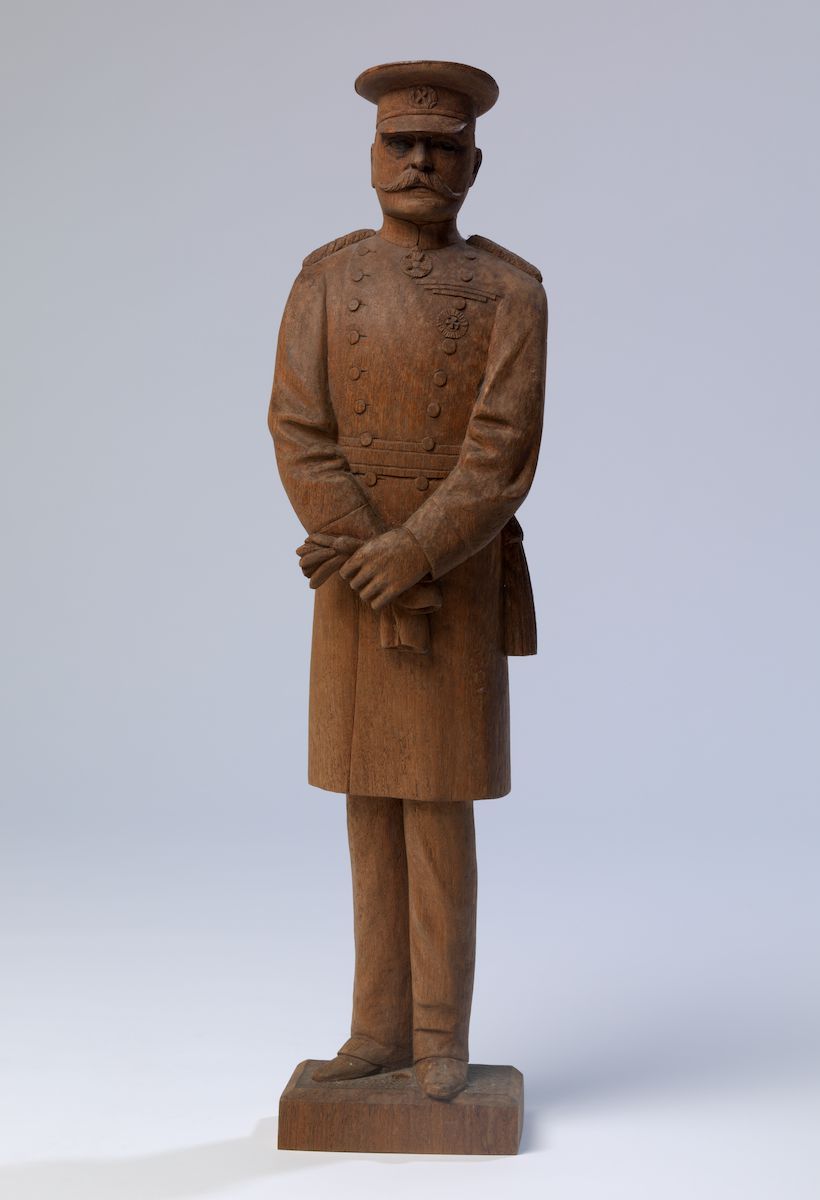Among our latest crop of acquisitions is a small, demotic effigy of Lord Kitchener, a type of statuette once eagerly sought by thousands of patriotic households. I am struck by the fact that explaining Kitchener’s significance to Australia is more or less the same thing as telling the story of our involvement in every imperial military campaign between the relief of Khartoum (1884–85) to the Dardanelles – as well as the invention, effectively from scratch, of Commonwealth defences in the decade following Federation. Yet who now remembers Kitchener other than as a vaguely menacing, moustachioed shadow adorning WWI recruiting posters?
In 1902 Kitchener, Lord Roberts of Kandahar and Garnet Wolseley became the first three members appointed by King Edward to the new Order of Merit. Their standing was simply colossal. We speak of globalization, but for decades Lord Kitchener alone stood at the very centre of the affairs of Sudan, South Africa, Egypt, India, Canada, Australia, New Zealand and Britain herself. It was a Kitchener appointee who in 1911, on his advice, selected the Duntroon estate, here in the as yet unbuilt federal capital, to be the site of our Royal Military College. It is, of course, still there. It fell to Canberra merely to grow up around it. With considerable prescience, in 1909 Kitchener privately alerted Prime Minister Andrew Fisher to the rapid growth of Japanese military capabilities and ambitions in the Pacific, long before Japan ceased to be an ally of Britain.
As a direct consequence of this, in 1919 Papua New Guinea became the Commonwealth of Australia’s one and only colonial dalliance. Exactly like Fiji, Papua was originally annexed in the 1880s (à la Leopold of the Belgians) by colonists acting more or less upon their own responsibility, to the extreme annoyance of the Colonial Office in Whitehall. As with Fiji, Papua was later and most reluctantly brought under the Union Flag largely to wrest control from the sometimes mad, frequently bad, and entirely unsupervised. The northern part of the island, meanwhile – New Guinea – was a colonial possession of Germany. It was ostensibly to secure a buffer against the Japanese threat that Kitchener had identified – correctly as it turned out – that Prime Minister Billy Hughes argued for, and (even more incredibly) won, perhaps the most eccentric article of the Treaty of Versailles, namely the handing over to Australia of Papua by Britain, and of German New Guinea by the vanquished. The western half of the island remained under the the Dutch East Indies’ administration until 1962, when it was added to the Republic of Indonesia. Independence did not come to PNG until 1975.
Field Marshal The Right Honourable The Earl Kitchener of Khartoum, KG, PC, KP, GCB, OM, GCSI, GCMG, GCIE perished in 1916 aboard HMS Hampshire after she struck a German mine near Scapa Flow. His Lordship’s body was never found.














